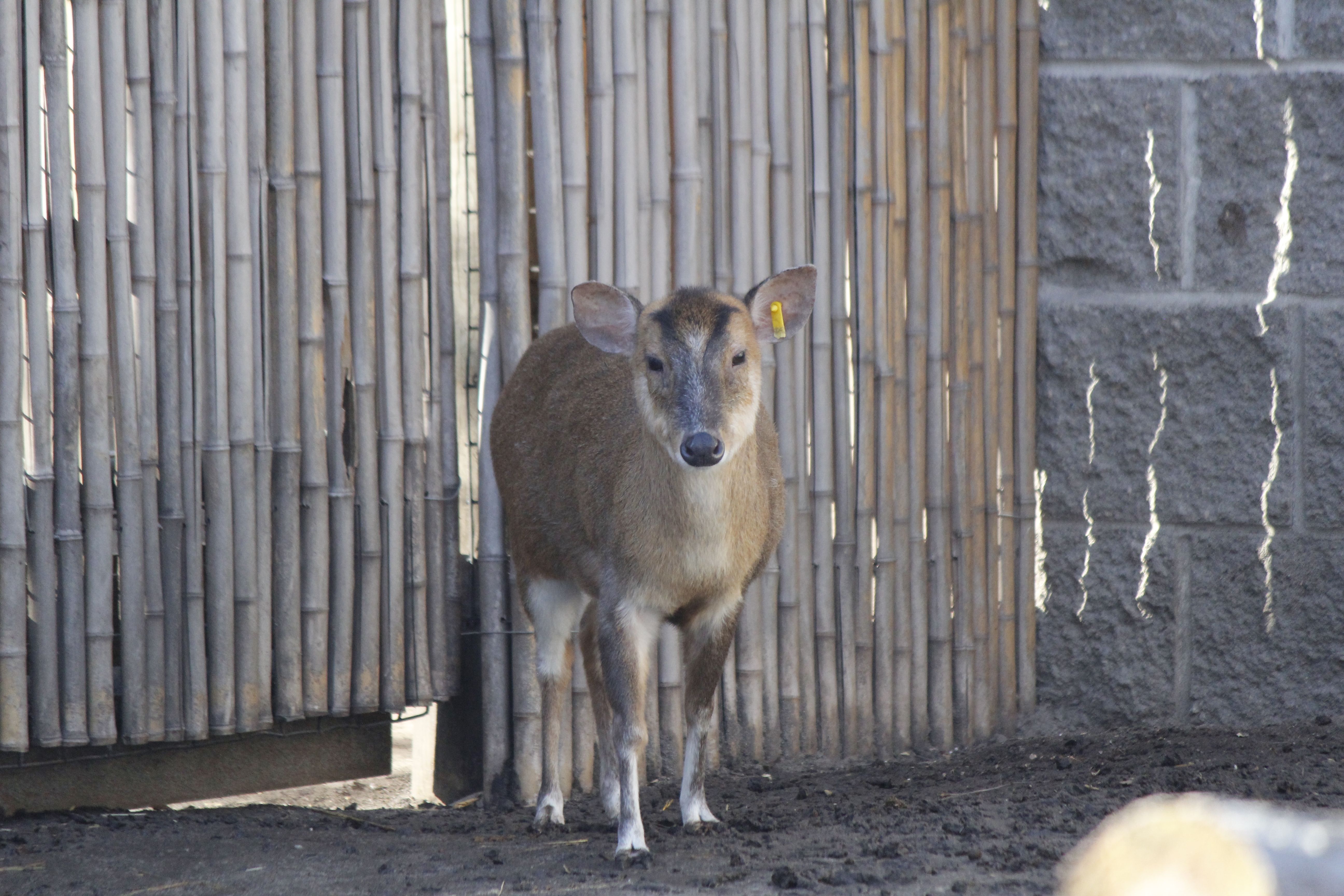Reeves's Muntjac
Muntiacus reevesi

NATURAL HABITAT
The Reeves’s muntjac is found in forests, areas of dense vegetation and hilly country from sea level to medium elevations.
DIET
IN THE WILD – Grasses, leaves, tender shoots and fallen fruit
IN THE ZOO – Specially formulated grains for herbivores and hay
FASCINATING FACTS
- Referred to as the barking deer
- Bark to scare off predators, warn other animals of danger and communicate
- Use scent glands located in the front of their eyes to mark territories
- Crepuscular, meaning they are most active at dawn and at dusk
- Use long tongue to strip leaves from bushes




